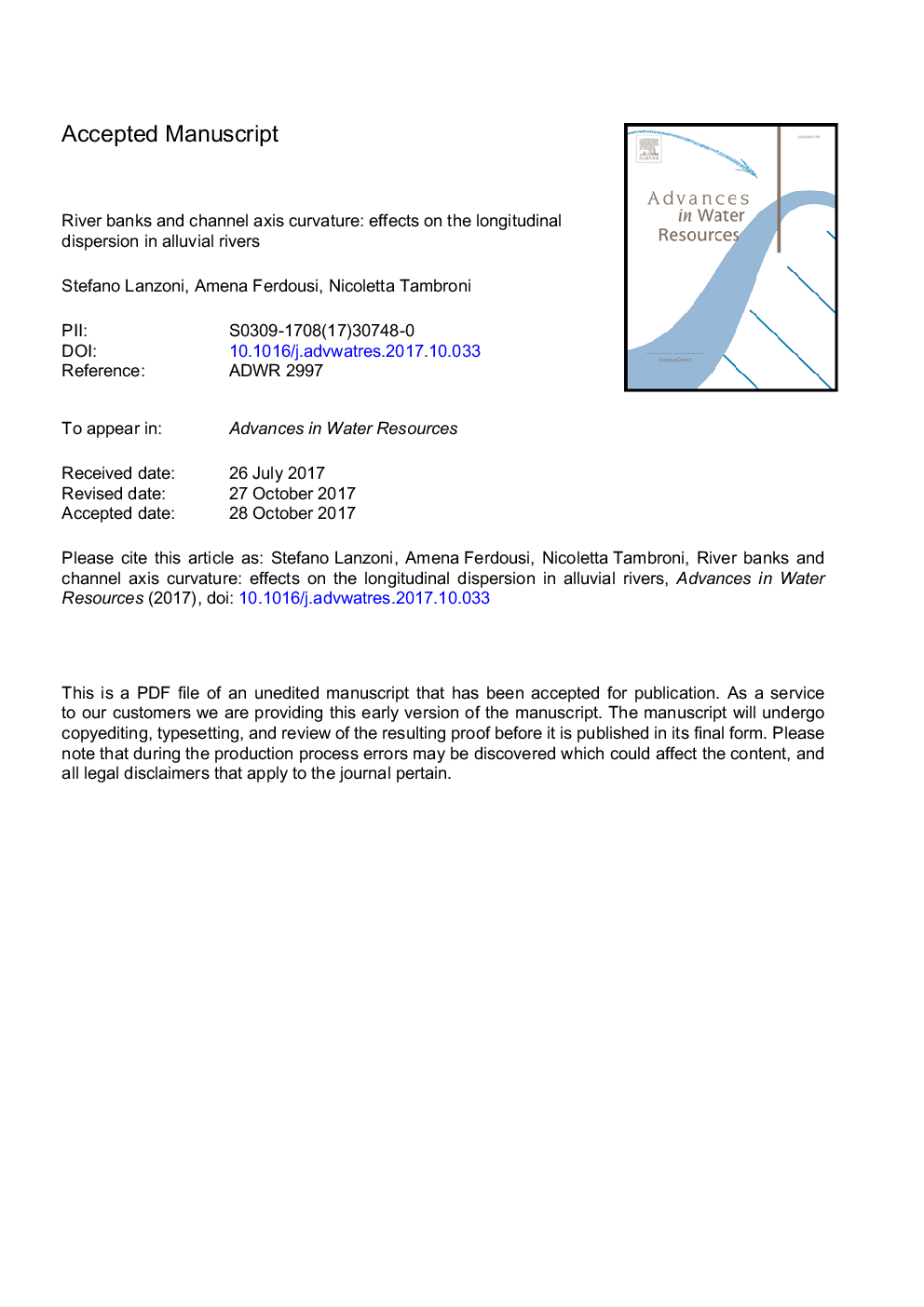| Article ID | Journal | Published Year | Pages | File Type |
|---|---|---|---|---|
| 8883348 | Advances in Water Resources | 2018 | 61 Pages |
Abstract
The fate and transport of soluble contaminants released in natural streams are strongly dependent on the spatial variations of the flow field and of the bed topography. These variations are essentially related to the presence of the channel banks and to the planform configuration of the channel. Large velocity gradients arise near to the channel banks, where the flow depth decreases to zero. Moreover, single thread alluvial rivers are seldom straight, and usually exhibit meandering planforms and a bed topography that deviates from the plane configuration. Channel axis curvature and movable bed deformations drive secondary helical currents which enhance both cross sectional velocity gradients and transverse mixing, thus crucially influencing longitudinal dispersion. The present contribution sets up a rational framework which, assuming mild sloping banks and taking advantage of the weakly meandering character often exhibited by natural streams, leads to an analytical estimate of the contribution to longitudinal dispersion associated with spatial non-uniformities of the flow field. The resulting relationship stems from a physics-based modeling of the flow in natural rivers, and expresses the bend averaged longitudinal dispersion coefficient as a function of the relevant hydraulic and morphologic parameters. The treatment of the problem is river specific, since it relies on an explicit spatial description, although linearized, of the flow field that establishes in the investigated river. Comparison with field data available from tracer tests supports the robustness of the proposed framework, given also the complexity of the processes that affect dispersion dynamics in real streams.
Related Topics
Physical Sciences and Engineering
Earth and Planetary Sciences
Earth-Surface Processes
Authors
Stefano Lanzoni, Amena Ferdousi, Nicoletta Tambroni,
